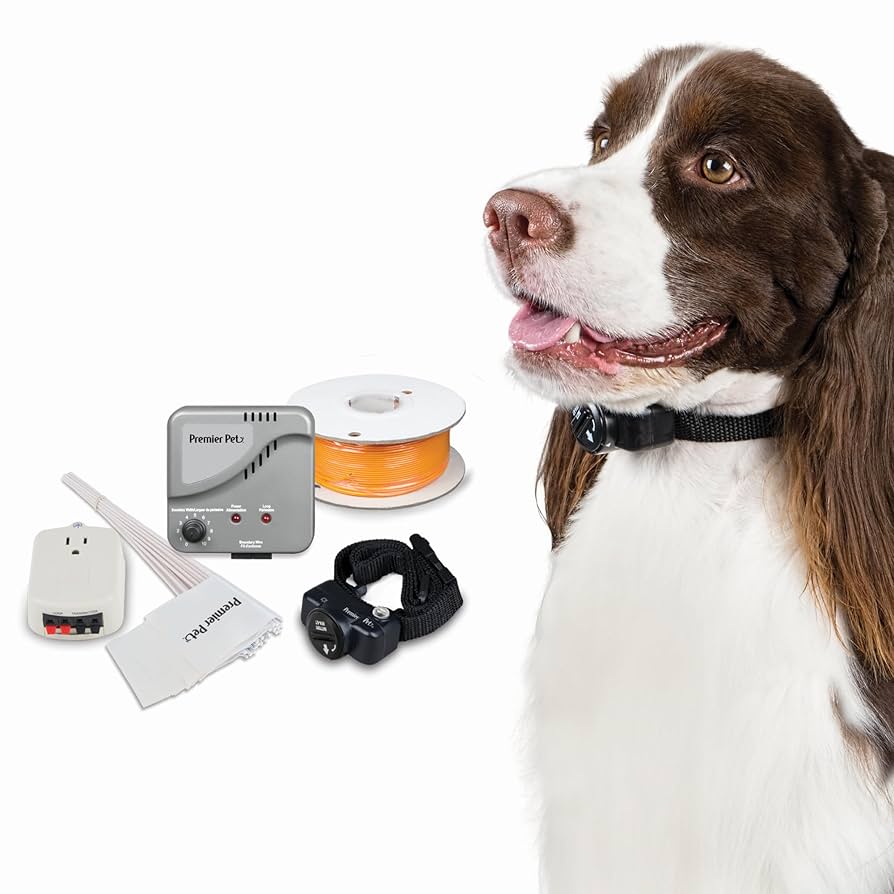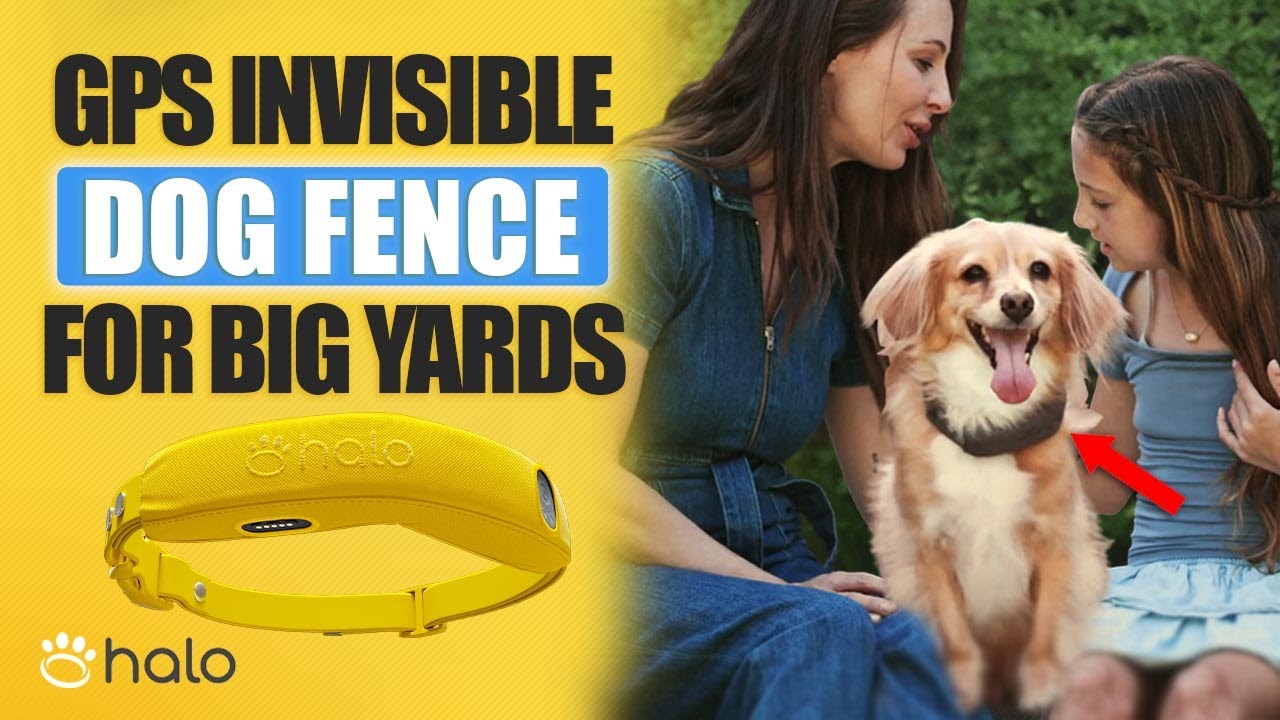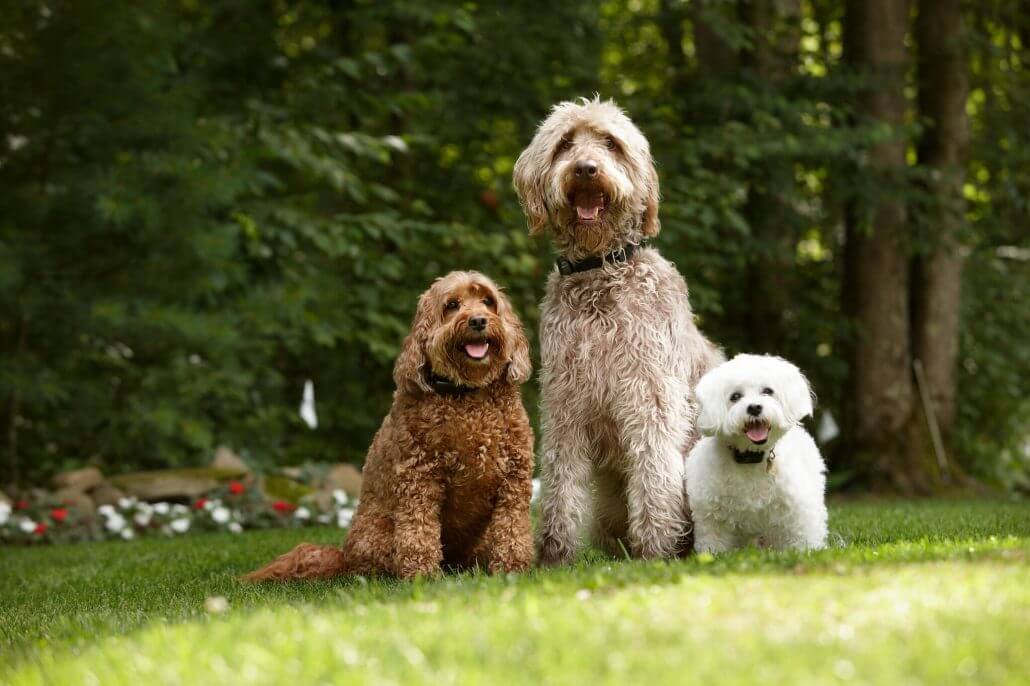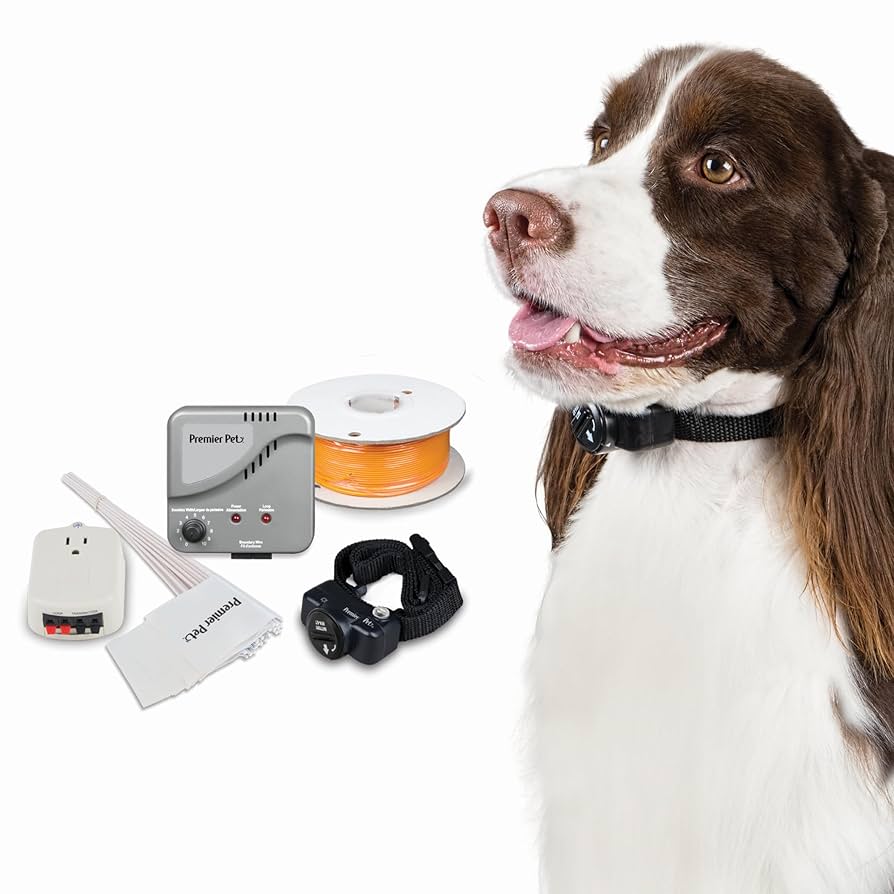Wireless Dog Fence for Large Yards Quora: Best Options & Reviews
Exploring the best wireless dog fence solutions for large properties? Our comprehensive review delves into how these systems work, their advantages, and offers expert tips tailored for expansive yards. Discover the top options today!
If you’re a proud owner of a large property and want to give your furry friend the freedom to roam safely, a wireless dog fence for large yards quora is an innovative solution worth considering. As pet technology evolves, choosing the optimal system can be daunting, especially with the plethora of options available on the market. This guide aims to serve as your ultimate resource—covering how wireless fences work, what features to look for, top system reviews, installation tips, and maintenance advice. We’ll analyze the wireless dog fence for large yards quora review landscape to help you make an informed decision. Whether you have one dog or multiple large breeds, this extensive guide combines insights, expert analysis, and product recommendations to ensure your pet’s safety and happiness.
$245.95
$259.99
Understanding Wireless Dog Fences for Large Properties

As pet owners increasingly seek safer, more flexible fencing solutions, wireless dog fences have gained popularity, especially for large yards. They offer an unobtrusive, customizable boundary that creates freedom for dogs without the physical barriers of traditional fencing. However, understanding their operation, benefits, limitations, and what features are crucial becomes essential in making an educated choice.
Before we explore further, it’s vital to recognize the underlying mechanics of these systems. Unlike physical fences made of wood or chain-link, wireless fences use radio signals or Wi-Fi technology to establish a boundary. This innovative approach offers seamless integration into your landscape, minimal maintenance, and greater aesthetic appeal. That said, given the needs of large property owners—who often face unique challenges—certain considerations must be prioritized, which we will dissect in detail.
How Wireless Dog Fences Work
Wireless dog fences operate on radio frequency signals or Wi-Fi technology, creating a virtual boundary that your pet cannot cross unless they receive training. Typically, the system emits a boundary signal from the base station, which encircles your yard through a transmitter installed centrally or at a strategic point. Once turned on, the transmitter sends a radio signal establishing a designated perimeter, which can be adjusted based on your yard’s dimensions.
The dog’s collar, equipped with a receiver, picks up the signal. When your dog approaches the boundary, the collar emits progressive warning signals—such as vibration, beep, or mild static correction—that prompt your pet to turn back. The system’s primary advantage lies in its ability to dynamically adapt to large yard sizes without cumbersome physical barriers.
Notably, wireless fences are designed with adjustable boundaries, allowing for customization based on your property size. Some advanced systems integrate GPS technology, which enables precise boundary setting over even vast or irregularly shaped properties. These GPS-enabled systems are ideal for large yards, offering more accurate containment with lower interference issues.
Advantages of Wireless Fences Over Traditional Physical Barriers
Wireless fences offer some compelling advantages over conventional physical barriers. For large yard owners, these benefits translate into increased flexibility, aesthetic appeal, and overall convenience.
First, wireless fences eliminate the need and expense of installing traditional fencing, which can be labor-intensive and costly, especially over expansive properties. Unlike physical barriers, which require maintenance, repairs, and sometimes invasive installation work, wireless systems are easy to set up and remove if needed. This ease of install makes them highly attractive for temporary or rental properties.
Second, wireless fences provide a clean, unobtrusive look. With no physical barrier, your landscape remains open and visually appealing, without the visual clutter of fences, gates, or walls. This aesthetic benefit is significant for homeowners keen on maintaining the natural beauty of their large yards.
Third, the adaptability and flexibility of wireless fences enable owners to easily modify boundaries—such as expanding them for new landscaping or accommodating additional dogs—without significant infrastructure changes. Furthermore, with portable features, you can take the system along during travel, giving your pet continuous safety no matter where you go.
Lastly, wireless fences often offer higher safety, as physical fences might have sharp edges or gaps that pose risks. Wireless systems, with their adjustable limits, make it easier to ensure your pet’s safety without physical hazards.
Limitations and Considerations for Large Yards
Despite their benefits, wireless fences are not without limitations, particularly in large yard environments. It is crucial to understand these pitfalls to make an informed purchasing decision.
One key limitation is the potential for signal interference. Wireless signals can be disrupted by obstacles such as dense trees, buildings, power lines, or electronic devices, which can distort the boundary or cause false alerts. For large yards, where the signal must cover considerable distances, this interference becomes more problematic, requiring robust systems with high-range and interference-resistant technology.
Additionally, GPS-enabled wireless fences, while precise, may suffer from accuracy issues in heavily wooded areas or challenging terrains. GPS signals rely on satellite connectivity, which can be weakened by obstructions, leading to boundary inaccuracies. This could inadvertently allow your dog to escape or cause false warnings.
Another consideration for large properties is system range. Most standard wireless fences have a maximum effective distance, often around 1,000 feet. For expansive yards, you may need multiple transmitters or advanced setups, which might increase costs and complexity.
Energy consumption and maintenance are also aspects to consider. While wireless systems are generally low-maintenance, the batteries of the collar and the system’s transmitter require regular checking and replacement, especially with outdoor exposure to weather.
Lastly, some dogs might be hesitant to wear a collar with static correction or might become accustomed to the warning signals over time, reducing their effectiveness. Proper training and system selection are crucial to minimize these issues.
Key Features to Look For in a Wireless Fence System
When choosing a wireless fence for a large yard, attention to feature specifics ensures you select the most reliable, safe, and effective system. Critical factors include coverage area, signal strength, boundary customization, and safety.
The ability to adjust the boundary precisely allows you to tailor the system to your unique landscape. Look for systems with adjustable boundary radius—preferably with a remote control or smartphone app for easy updates. Larger yards often demand more robust coverage, so search for models that explicitly specify their maximum range.
Signal strength and reliability are paramount, especially for extensive properties. Advanced systems with anti-interference technology and multiple frequency options tend to perform better under complex environments, reducing false triggers or boundary breaches.
Compatibility with multiple or large dogs is another significant feature. Ensure the system supports multiple collars and offers adjustable correction levels suitable for different breeds and sizes. Some models also include features like gentle vibration modes for more sensitive dogs.
Ease of installation and ongoing maintenance are essential, particularly for large properties where professional setup might be beneficial. Look for systems with straightforward, quick installation procedures, and durable hardware designed for outdoor use.
Safety features such as automatic shut-off in case of malfunction, collar indicator lights, and humane correction levels should be prioritized to ensure your dog’s well-being. Cost considerations, including initial purchase price and warranty coverage, are also factors influencing long-term satisfaction.
Factors to Consider When Selecting a Wireless Fence for Large Yards

Choosing the perfect wireless dog fence for large yards quora demands thorough evaluation of key parameters. While the initial appeal may be in the system’s advertised range, actual performance, safety, and compatibility determine overall effectiveness. Here, we break down essential considerations to guide your decision-making process.
Range and Coverage Area
For large properties, the range is arguably the most critical factor. The system must comfortably cover your entire yard without dead zones or weak spots.
Most wireless fences specify a maximum range, often around 1,000 feet, but real-world effectiveness can vary depending on obstacles and environment. Before purchasing, measure your property’s dimensions and compare them with the system’s coverage to ensure complete containment.
Some advanced wireless systems feature multiple transmitters or zoning capabilities, allowing better coverage for irregularly shaped yards. GPS-enabled fences are particularly suitable for large spaces, offering precise boundary setting that adapts to different terrains with minimal interference.
It’s advisable to select a system with an overlapping safety margin—preferably around 10-20% beyond the actual yard size—to account for signal disruptions or environmental changes. Investing in a reputable brand with proven long-range capabilities will ensure your large yard remains safe and contained.
Signal Strength and Reliability
Signal quality is vital for continuous, consistent boundary enforcement. Weak signals or interference can cause false alarms or allow your dog to escape. Therefore, systems with anti-interference features—like frequency-hopping spread spectrum technology—are preferable in challenging environments.
Reliability often correlates with brand reputation and technical specifications. Advanced models equip their transmitters with multiple channels and automatic noise filters, improving stability in complex setups or areas with many electronic devices.
For large yards, consider models that include a backup power supply or battery life extension options, assuring uninterrupted operation during outages or adverse weather.
Boundary Customization and Adjustability
Each large yard has unique features—trees, slopes, flower beds—that may require boundary adjustments. Flexible systems enable you to define specific zones or adjust the boundary radius with ease.
Look for wireless fences featuring intuitive control interfaces, remote management via mobile apps, or physical adjustments that allow precise boundary shaping. Customization helps prevent accidental escapes and accommodates landscape changes over time.
Some IP-GPS systems include pinpoint boundary setting, supporting complex shapes and precise positioning, which are ideal for large and irregular plots. Ensuring these systems also have easy calibration options will save you time and frustration during setup.
Compatibility with Large or Multiple Dogs
Many pet owners have multiple dogs or larger breeds that may require different correction levels or collar sizes. Select a system that supports multiple collars and allows individual adjustments, providing humane and effective containment.
Check for collars with adjustable correction intensities, vibration modes, and safety shut-off features. These options help accommodate dogs of varying temperaments and sizes, ensuring a peaceful, stress-free experience for your pets.
Additionally, some systems offer active management features—such as status alerts for each collar—making it easier to monitor your pets’ containment status remotely.
Ease of Installation and Maintenance
For large properties, professional installation might be advisable, but many wireless fences are designed for straightforward DIY setup with step-by-step instructions.
Look for systems with clear manuals, minimal hardware, and quick calibration processes. Compatibility with smartphone apps or remote controls can simplify boundary adjustments and troubleshooting.
Maintenance should be straightforward—weather-resistant hardware, easy access to batteries, and user-friendly indicators for system health ensure long-term performance. Regular system checks, updates, and battery replacements should be manageable without professional intervention.
Safety Features and Dog Comfort
Safety is paramount. The best wireless fences incorporate humane correction methods—such as vibration or audible warnings—before escalating to static stimuli. Ensure your chosen system supports adjustable correction levels or gentle warning signals.
Features like automatic shut-off if the collar malfunctions, reflective collars for visibility, and weather-proof hardware contribute to safety and durability.
Dog comfort also hinges on a proper fit of collars—look for adjustable, lightweight designs made from non-irritating materials. Proper training protocols reducing static corrections can make the experience more positive and effective.
Cost and Warranty Options
While more expensive systems tend to offer better coverage, advanced features, and reliability, it’s essential to consider your budget wisely. Beware of systems that seem cheap but may lack durability or effective range.
Always verify the warranty period and what it covers—most reputable brands offer at least a one-year warranty, with options for extension. Good customer support and access to replacement parts can save costs over the system’s lifespan.
Additional accessories like extra collars or upgraded antennas may incur costs, but they can greatly enhance system flexibility for large yards or multiple pets.
Top Wireless Dog Fence Systems Suitable for Large Yards

Based on extensive wireless dog fence for large yards quora review and market analysis, several systems stand out for their performance, reliability, and features suitable for expansive properties. Here, we highlight the top contenders, discussing their core features, advantages, and limitations.
System 1: PetSafe Wireless Containment System
Features:
- Coverage radius up to ⅓ acre (expandable with additional units)
- Adjustable boundary with remote control
- Collar supports multiple correction levels—beep, vibrate, static
- Waterproof, durable collar design
- Expandable boundary options for larger setups
Pros:
- Easy to install and calibrate
- Good safety features with training mode
- Suitable for moderate large yards, adaptable with add-ons
Cons:
- Limited outdoor range without multiple units
- Signal interference possible in complex terrains
- Not GPS-based, limiting precision in irregular shapes
This system offers an excellent balance for owners with large but manageable properties, with the ability to expand coverage gradually.
System 2: Halo Collar GPS Wireless Fence
Features:
- Utilizes GPS technology for precise boundary setting
- Up to 1,000 acres coverage (ideal for very large yards)
- Custom boundary shapes with app control
- Supports multiple dogs with individual settings
- Integrates with mobile app for real-time monitoring
Pros:
- Highly accurate boundary setting, perfect for large, irregular yards
- Easily programmable via smartphone app
- Safe correction modes including vibration and tone
Cons:
- Higher price point
- Requires strong GPS signal for optimal performance
- Battery management for collars can be demanding
This GPS-based system is a premium choice for large yard owners seeking accuracy and flexibility.
System 3: SpotOn Virtual Fence (GPS Enabled)
Features:
- Satellite-based boundary setup through mobile app
- Supports large properties with no physical boundary limitations
- Adjustable correction levels
- Supports multiple collars with individual boundaries
Pros:
- Very accurate boundary setting
- Portable and flexible—ideal for large, irregular yards
- Easy to modify and update boundaries through app
Cons:
- Dependency on mobile data and GPS signal quality
- Premium pricing
- Might require multiple collars for multiple dogs
An excellent option for tech-savvy owners seeking maximum flexibility across large estates.
Additional Equipment or Accessories Needed
- Extra collars for multiple pets
- Weather-proof collars for outdoor durability
- Portable transmitters or extra antennas for enhanced range
- GPS modules for hyper-precise boundary control
- Remote management apps or controllers for adjusting boundaries
Ensuring compatibility with your chosen system and landscape requirements is key to long-term success.
Installing and Training Your Dog with a Wireless Fence
Proper installation and training are critical components in creating a safe, effective containment zone. Many pet owners underestimate the importance of consistent training and meticulous setup, especially on large properties where environmental variables are more significant.
Proper Placement and Calibration of the System
Positioning your transmitter centrally within your yard maximizes coverage and minimizes interference. For GPS systems, ensure a clear line of sight to satellites for the best accuracy. Calibration involves setting the boundary zones with care—initially at the minimal radius, then gradually increasing as your dog learns.
Testing different placements and boundary sizes during early training phases helps you identify optimal locations. Also, consider local electromagnetic interference sources—such as Wi-Fi routers or power lines—that may weaken signals.
Once installed, monitor the system’s calibration through test runs—using your dog’s collar to gauge the warning signals and boundary effectiveness. Adjustments should be minimally invasive but precise enough to prevent escapes or false corrections.
Effective Training Techniques for Large Yard Boundaries
Training your dog with a wireless fence requires patience, consistency, and positive reinforcement. Start with your dog on a leash near the boundary, using treats and praise when they respond correctly to warnings. Gradually increase distance, allowing your dog to learn to associate the warning signals with boundary awareness.
Use command signals or cues that your dog understands, such as “Stay” or “Come,” and reinforce positive behaviors. Keep training sessions short and frequent to prevent confusion or anxiety.
For large yards, creating visual cues—like flags or markers—around boundaries can aid your dog’s spatial understanding. When your pet approaches the limit, give consistent commands and reward compliance.
Patience is key—some dogs may take weeks to fully adapt, especially to static correction systems. Never use punishment; instead, focus on positive reinforcement and humane corrections to foster trust and safety.
Tips for Ensuring Your Dog’s Safety and Compliance
Regularly inspect collars and system functions to ensure they operate correctly. Keep collars clean, properly fitted, and charged. Always supervise initial training and ongoing use to correct issues like collar discomfort or non-compliance.
Provide your dog with ample exercise, mental stimulation, and comfort, so they don’t see the boundary as a source of stress. Use treats, toys, and praise during training to promote positive associations.
Establish a routine where your dog understands boundaries as part of their daily landscape exploration. Regularly reinforce commands and boundary awareness, especially after changes in landscape or system calibration.
Troubleshooting Common Issues During Setup
Interference or weak signals are common problems. Relocate the transmitter away from interference sources and check for environmental obstacles. For GPS systems, ensure your device has an unobstructed view of satellites.
If your dog is not responding to warnings, increase correction levels gradually, or explore different training techniques. Persistent issues may warrant professional consultation for system calibration or behavioral advice.
In the case of collar discomfort or malfunction, check for proper fit, adjust settings, or replace batteries. Keep a spare collar or receiver on hand for emergencies.
Maintaining and Monitoring Your Wireless Fence System
Like any safety device, ongoing maintenance and monitoring ensure your wireless dog fence for large yards quora remains effective and safe over time. Being proactive extends the lifespan of your investment and guarantees your dogs’ containment.
Regular System Checks and Updates
Schedule periodic inspections of all hardware components, including transmitters, antennas, and collars. Ensure connections are secure, hardware is damage-free, and batteries are at recommended levels.
Update firmware and software through manufacturer apps or websites, as manufacturers often release patches to improve reliability, fix bugs, or enhance features. Regular updates minimize system failures and security risks.
Managing Interference and Signal Disruptions
Identify and mitigate interference sources, such as Wi-Fi networks, electrical equipment, or dense terrain. Move transmitters away from such obstacles, and consider adding repeaters or extenders if needed.
When experiencing signal disruptions, test your system’s baseline performance and explore troubleshooting guides from the manufacturer. Sometimes, simply repositioning hardware or upgrading components can restore stability.
Ensuring Long-Term Effectiveness and Safety
Routine collar maintenance—cleaning, battery replacement, and fit checks—is essential. Use manufacturer-recommended batteries or accessories like the PetSafe UltraLight Receiver Collar, which offers durability and comfort, ensuring your pet’s safety and system longevity.
Keep your yard free of hazards such as sharp objects or toxic plants that could cause injuries or affect your pet’s behavior near the boundary area.
Observe your dog regularly for signs of discomfort or confusion, adjusting correction levels or boundaries as needed. Remember, effective containment depends on a combination of reliable technology and ongoing training.
Conclusion
Choosing the best wireless dog fence for large yards quora involves understanding how these systems operate, considering essential features, and evaluating top-rated options suited for expansive properties. Proper installation, consistent training, and diligent maintenance are fundamental to ensuring your pet’s safety and freedom. Innovations like GPS-enabled fences provide precise boundary control, making them ideal for large and irregularly shaped yards. By carefully analyzing your property’s unique needs and matching them with a system’s capabilities, you can create a safe, humane, and unobtrusive environment for your beloved canine companions. Investing in a trustworthy, well-designed wireless fence system will not only safeguard your pets but also add peace of mind—a true win-win for pet owners seeking freedom and security.
Ready to upgrade your pet containment system? Explore our top recommended wireless fences and find the perfect fit for your large yard today! Your pet’s safety and happiness are just one click away.





























